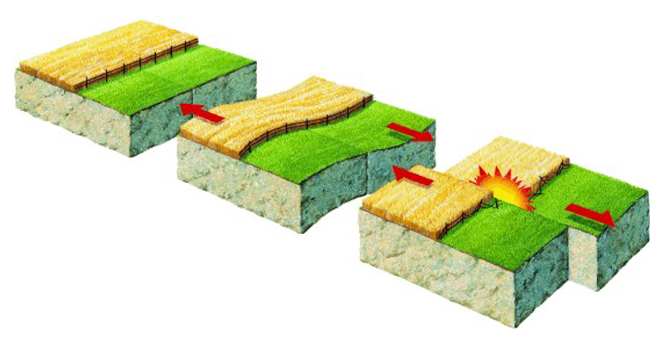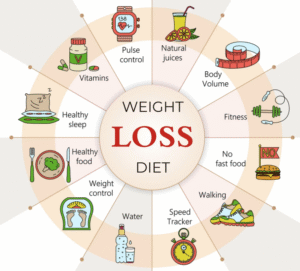
Earthquakes: Causes, Effects, and Safety Tips
Understand what an earthquake is, its causes, effects, and how to stay safe.
Understand how to make the household safe during an earthquake, among others-get tips on earthquake preparedness, prediction, and resilience in earthquake-prone areas.
After going through this article, learn the causes of earthquakes, the effects they have, and safety precautions to take in case of earthquakes.
Find out how to prepare for earthquakes, how you can prevent them, and resilience in places proned to earthquakes.
An earthquake is defined as a violent shaking of the ground due to volcanic activity or movement of the earth’s crust.
Despite its negative impacts, saving lives in the event of an earthquake is possible through preparation—with knowledge about how and why earthquakes occur.

Why do Earthquakes Occur?
These areas are likely to experience seismic activity because of their location on tectonic plate boundaries:
“Earthquakes” is a term used to describe sudden shaking movements of the ground and is caused due to movements of tectonic plates – enormous slabs which form the surface of the planet.
Such plates are bound to shift over time, and the friction created by the grinding of one plate against another is what leads to shaking of the ground.
Mining activities, volcanic eruptions, landslides and even human induced activities can also contribute to it.
Some side effects that follow from the “natural volcanic tremor” are often more troublesome than the tremor itself and have the potential to be life threatening. Some of them include:
Shaking of the ground along with other impacts could lead to structural damage. Bridges, buildings and roads could collapse, causing fatalities.
In addition to aftershocks and tsunamis, secondary hazards are other life threatening factors to rescue missions.
Economic acessibilty is also dangered as repair work essential hinder movement, communication along with other hosted necessities.
Terror along with chronic tolerable impacts, pose severe threats to existing psychological support as a result of natural volcanic stratatypes. The impacts can deepen mental health problems for survivors.
Earthquake-Prone Regions
These areas are likely to experience seismic activity because of their location on tectonic plate boundaries:
The Pacific Rim of Fire- Countries like Japan, Indonesia and Chile are regularly hit by earthquakes.
The Himalayan Belt- Includes parts of Pakistan, India and Nepal.
The San Andreas Fault – Situated in California, USA.
It is important to know the risk of earthquakes in the area you live in so that you can be prepared.
Earthquakes: Causes, Effects, and Safety Tips
Preparing for an Earthquake
Being prepared will reduce the damage done by an earthquake:
create a Family Emergency Plan- Set guidelines and talk about how to get in touch as well as where to go.
Do not forget to Pack an Emergency Kit- Water, long-lasting food, a first-aid kit, flashlight, batteries, etc should be included.
Prevent Heavy Furniture from Falling- Bookcases and cabinets should be anchored to walls to stop them from tipping over.
Be Aware of the Controls for Heating and Water- Understand where the gas, water and electrical switches of your home are.
Terror along with chronic tolerable impacts, pose severe threats to existing psychological support as a result of natural volcanic stratatypes. The impacts can deepen mental health problems for survivors.
Earthquake Preparations
Your life can be saved if you follow these instructions when dealing with an earthquake:
Drop, Cover, and Hold On: Go down on your hands and knees, get underneath strong furniture, and hang on until the shaking has stopped.
Stay Indoors: If you are indoors, do not go outside. Stay away from windows and exterior walls.
If Outdoors: Relocate to a place away from buildings, trees and power lines.
If Driving: Drive until you find a safe area and do not exit the car until the shaking has ceased.
Post Earthquake
Even after the shaking has stopped the final danger is not upon you:
Aftershock: Expect these smaller quakes to succeed the main one and cause extra damage.
Check for Hazards: Gas leaks, fires or structural damages.
Follow Instructions: If signs to evacuate have been instructed, then that should be done along with listening to reliable channels.
Improvements for Earthquake Prediction and Technology
These recent advancements allow us to preempt and deal with earthquakes in more controlled ways:
Machine Learning Models: Earthquakes can be predicted much easier now through analyzing seismic data with the help of AI.
Undersea Internet Cables: Early signs of tectonic activity can be warned with the use of fiber-optic cables.
Seismic Networks: Agencies such as the Pacific Northwest Seismic Network track ground movements to offer real-time monitoring and alerting systems.
Global Earthquake Preparedness
Nations Countries with high degrees of seismic activity have put in place robust preparedness measures:
Japan: known for strict building codes and extensive desktop simulations of drill exercises, this country has remarkably improved on the issue of earthquake fatalities .
United States: There is still an achievement gap among the states towards the implementation of comprehensive earthquake early warning systems . Progress has been noted, though.
Conclusion
It is very clear that comprehending earthquakes alongside preparation makes all the difference.
Information, securing your surroundings, formulating strategies ahead of time.
can save you and your loved ones from the annihilating impacts caused by these calamities.
The centers for disease control and prevention or simply CDC, alongside the Red Cross have more information regarding preparatory measures for earthquakes.





